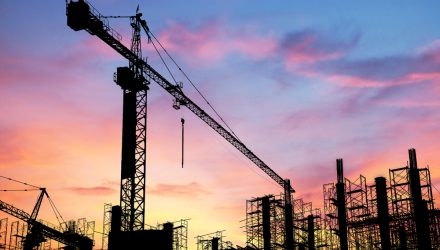With a sweep of the Senate runoff races in Georgia Tuesday, Democrats control the White House and both houses of Congress, stoking speculation that a massive government spending is coming. That could benefit infrastructure assets, such as the AGFiQ Global Infrastructure ETF (GLIF).
The AGFiQ Global Infrastructure ETF uses a multi-factor investment process to seek long-term capital appreciation by investing primarily in global equity securities in the infrastructure industry.
Large-scale infrastructure legislation has been discussed for years, but could actually take place in 2021.
“A Dem Congress will prioritize palatable consumer/business fiscal stimulus over other priorities such as corporate tax hikes or aggressive anti-business regulation,” reports Mike Santoli for CNBC.
GLIF Getting Its Moment
The infrastructure category has historically offered higher dividend yields than global fixed-income and global equities, along with greater predictability of long-term cash flows. GLIF may be able to capture the growing demands of economic development that are driving more funding into transport, power, and other systems.
States and cities have been scaling back infrastructure spending in recent times.
“This new paradigm was due to a number of factors, but mostly reflects a challenging operating environment and growing fixed-cost obligations, like pensions and other benefit costs through the lower-for-longer recovery period,” according to S&P Global Ratings. “Over the past decade, S&P Global Ratings estimates the U.S. would have spent approximately $1.5 trillion more in state and local government infrastructure investments had it continued on its pre-Great Recession path.”
Investors can turn to exchange traded funds to track the expansion of U.S. infrastructure, even if the incoming Joe Biden administration doesn’t make good on plans for increased fiscal spending.
President-elect Joe Biden promised on the campaign trail to push through a $2 trillion plan to upgrade the country’s infrastructure and combat climate change by rebuilding roads and bridges, eliminating carbon emissions from the power grid, putting more Americans in electric vehicles, and funding zero-emissions mass transit, the Wall Street Journal reports.
There is a significant need for near-term infrastructure spending and it could provide substantial benefit to GLIF.
“While the sudden and severe onset of the COVID-19-induced recession created new budgetary challenges, it also provided an opportunity for renewed infrastructure spending,” notes S&P Global. “S&P Global Economics estimates that a $2.1 trillion boost in public infrastructure spending over 10 years, to the levels (relative to GDP) of the mid-20th century, could add as much as $5.7 trillion to the U.S. over the next decade, creating 2.3 million jobs by 2024 as the work is being completed.
For more alternative investing ideas, visit our Alternatives Channel.
The opinions and forecasts expressed herein are solely those of Tom Lydon, and may not actually come to pass. Information on this site should not be used or construed as an offer to sell, a solicitation of an offer to buy, or a recommendation for any product.








